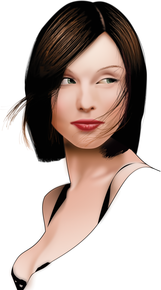Inking It In
Besides basic drawing functions, Inkscape provides sophisticated effects that can transform vector lines into soft, flowing brushstrokes or automate the drawing of paper-fine lines.

Luciano Lourenco, Free Art License, wiki.softwarelivre.org/InkscapeBrasil/Imagem108
Besides basic drawing functions, Inkscape provides sophisticated effects that can transform vector lines into soft, flowing brushstrokes or automate the drawing of paper-fine lines.
Inkscape is known as a drawing program, because image elements in an Inkscape document depend on lines (called vectors ) and not colored pixels like you use in bitmap programs. Its sometime association with randomly scattered sketches doesn't do the program with all its many effects full justice.
In its current version 0.48, Inkscape [1] can create images that are more like hand-painted watercolors than pencil drawings. However, these images are still based solely on lossless, scalable vector shapes (Figure 1).
This article will deal primarily with basic shapes and Bézier curves, which use control points to form basic shapes. Their smooth transitions and intuitive handling make them the digital equivalent of the French curve tool used by draftsmen. Since my previous Inkscape article appeared in our sister publication Linux Magazine [2] in 2005, nothing much has changed from Inkscape's solid base.
[...]